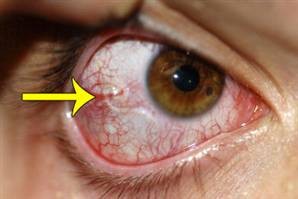Well. Here’s something you didn’t even know you needed to be terrified of.
A healthy, 25-year-old Christian minister went to an Oakland, Calif., emergency room in September 2008, complaining of something in his eye, reports a case study in this month’s issue of The Annals of Emergency Medicine. An eyelash, maybe? A pesky speck of dust, perhaps? Or, ew, maybe a stray contact lens had wedged its way somewhere in there?
It’s just so much worse. Israel Orellana’s discomfort was caused by something called an African eye worm. That’s a worm. In his EYEBALL.
It’s an infection called loaiasis, a skin and eye disease caused by the loa loa, a parasitic worm endemic to West and Central Africa.
In 2006, Orellana had spent 12 days in Equatorial Guinea in Central Africa, where he was preaching and helping out some missionary friends. Sometime while he was there, he had apparently been bitten by a deer fly, which is how the disease is transmitted to humans: The fly’s bite deposited larvae into his bloodstream, and those larvae grew into worms that crawled through his skin and into his eye.
The worms grew, traveling unnoticed throughout his bloodstream for almost two years, until one Sunday morning at church. “I started feeling like there was something in my eyeball, like there was a piece of dust in my eye,” says Orellana, who’s now 27 and lives with his wife in Oakland, Calif. Twelve hours later, it was still bothering him, and he and his wife studied the convex squiggle on the white of his eye in their bathroom mirror.
“In the white part of the eye there was an “s”-looking swivel,” says Orellana. He remembers his wife saying it looked like a worm, but neither one of them could believe something that horrifying until doctors confirmed their suspicions in the emergency room that night. “It was very small; you saw something like an ‘s’ moving around. It was pretty freaky.”
Not to be confused with river blindness, or onchocerciasis, loaiasis doesn’t damage vision. But when the creepy crawler moves across the eye, it can be irritating, even painful. “It can affect vision mainly because of local irritation; in general, the worm itself will usually migrate out of the eye eventually … unless you get repeat, repeat infections,” says Dr. Shannon Moffett, an emergency medicine doctor at Alameda County Medical Hospital in Oakland, Calif., who treated Orellana. Worst-case scenarios include damage to the brain, heart or kidneys.
An estimated 12 to 13 million people, mostly in West and Central Africa, are infected with the African eye worm; about 10 cases per year pop up in the United States, according to the Centers for Disease Control.
After Orellana arrived in the ER, he was treated with an oral medication called diethylcarbamazine, which kills the worms. Lucky for him, within just a few days, it worked.
